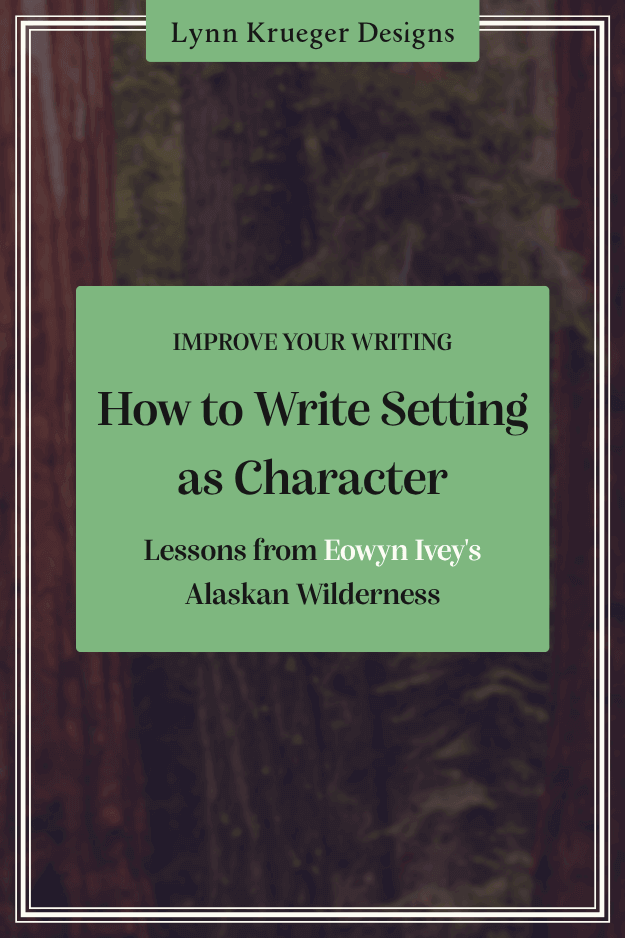How to Write Setting as Character: Lessons from Eowyn Ivey's Alaskan Wilderness
Part 1 of Wilderness & Wisdom: A Master Class with Eowyn Ivey
Lessons from Eowyn Ivey's Alaskan Wilderness
Picture this: Every time your protagonist steps outside her remote Alaskan cabin, she carries a rifle.
Not because she's expecting human trouble, but because the wilderness itself—with its bears, wolves, and unforgiving terrain—is as much a threat as any antagonist you could dream up.
This is the world Eowyn Ivey creates in Black Woods, Blue Sky, where the Alaskan landscape doesn't just provide a pretty backdrop. It breathes, threatens, nurtures, and ultimately shapes every single decision her characters make.
Here's what's genius about it: Ivey doesn't just write about a place—she writes about a living, breathing entity that becomes as crucial to the story as any human character.
Why Most Authors Get Setting Wrong (And Why It Matters)
Let's be honest—how many manuscripts have you read where the setting feels like an afterthought? Where characters could be transplanted to literally anywhere else without changing the story?
"Sarah walked through the forest" could just as easily be "Sarah walked through the park."
The setting becomes interchangeable wallpaper instead of the driving force it could be.
But when you learn how to write setting that truly functions as character, it:
Drives plot forward (characters must react to environmental challenges)
Reveals character depth (how do they respond to beauty vs. danger?)
Creates natural conflict (the environment itself becomes antagonistic)
Establishes authentic atmosphere (readers feel transported, not just informed)
For a look at how Scottish folklore was shaped by geography and environment, check out “When Water Whispers Danger.” (Coming Soon!)
Fiction Writing Techniques: How Ivey Creates an Immersive Setting
Technique #1: Respect Without Romanticization
The New York Times praised Ivey for presenting "the natural world with respect instead of romanticization." This is crucial for any fiction writing technique involving setting.
Ivey doesn't paint Alaska as a postcard-perfect wonderland OR a relentlessly hostile hellscape.
Instead, she shows us a place that's simultaneously:
Breathtakingly beautiful (sunlit waters, berry picking, swimming holes)
Genuinely dangerous (requires constant vigilance, isolation from help)
Deeply complex (offers both freedom and isolation)
Your takeaway: Don't idealize or demonize your setting—show its contradictions.
Real places—like real people—are complicated.
Technique #2: Make Geography Drive Decision-Making
In Black Woods, Blue Sky, every major plot point is shaped by the wilderness reality:
Birdie can't just call for help—there are no phones.
Food doesn't come from a grocery store—it comes from salmon, berries, and supplies flown in.
Winter isn't just cold weather—it's potential death without proper preparation.
Arthur's mysterious disappearances aren't just personality quirks—they're survival responses to this environment.
Ask yourself: How does my setting force my characters to act differently than they would anywhere else?
If the answer is "it doesn't," you're missing a huge opportunity.
Technique #3: Create a Vivid Setting Through All Five Senses
Readers consistently describe feeling "immersed" in Ivey's Alaska. One reviewer said, "The air is bracing and the scent of the trees and the river captivated me."
Notice she's not just describing what things look like. We feel the temperature, smell the forest, hear the rushing water.
The wilderness becomes visceral, not just visual.
When learning how to create setting that readers remember, move beyond the visual.
What does your character taste in the air?
What sounds surround them?
How does the ground feel beneath their feet?
Black Woods, Blue Sky is the perfect example of show, don’t tell. Or perhaps, feel, don’t tell.
Technique #4: Let Setting Reflect Internal Character States
The title itself—Black Woods, Blue Sky—captures this duality that mirrors the characters' internal conflicts.
Birdie is drawn to both the darkness and the hope, the danger and the freedom of the Alaskan wilderness.
The wilderness becomes a physical manifestation of her psychological landscape: beautiful but treacherous, offering escape while threatening destruction.
Look for ways your setting can mirror or contrast with your characters' emotional journeys.
A claustrophobic character in crowded spaces creates tension. A character seeking peace in a chaotic urban environment does too.
The Secret to Immersive Setting: Authentic Knowledge
Here's what gives Ivey such power in her fiction writing techniques: she LIVES in Alaska.
She's not researching from afar or relying on Google Images.
She knows what it feels like when your breath freezes, how heavy wet snow gets, the exact sound a cabin makes when wind hits it just right.
This doesn't mean you have to move to your novel's location (though wouldn't that be fun?). But it does mean:
Dig deeper than surface research
Talk to people who live/lived there
Understand the practical realities of daily life in that place
Visit if at all possible, and use all your senses when you do
Your Action Plan: How to Write Setting as Character
1. The Character Bio Test
Write a one-page bio for your setting, as if it were a character. What is its personality? What does it want? How does it help or hinder your protagonist?
If you can't answer these questions, your setting isn't working hard enough.
2. The Transplant Test
Could your story happen anywhere else? If yes, look for ways you could make the setting more personal or more specific.
The best settings are irreplaceable to the story being told.
3. The Five-Sense Audit
Go through a scene and count how many senses you've engaged. If it's just sight (and maybe sound), you're missing opportunities to create that visceral immersion readers crave.
4. The Decision Driver
List three major plot points in your story. For each one, ask: "How is this shaped by where it takes place?"
If the answer is "it's not," you've found a potential revision point.
Your stories deserve settings that work as hard as your characters do.
When you master these fiction writing techniques and create a world that breathes, threatens, and nurtures alongside your plot, you give readers an experience they can't get anywhere else.
Think back to that rifle Birdie carries every time she steps outside. That single detail tells us everything about her world—and makes us understand her choices in ways mere character description never could.
That's the power of setting as character: it doesn't just tell your story, it becomes your story.
Next in our Wilderness & Wisdom series, we'll explore how Eowyn Ivey seamlessly blends reality with the mystical—and how you can master magical realism without losing your readers along the way— in “Magical Realism Done Right: How to Blend Reality and Myth Without Losing Your Reader.” (Coming Soon!)









